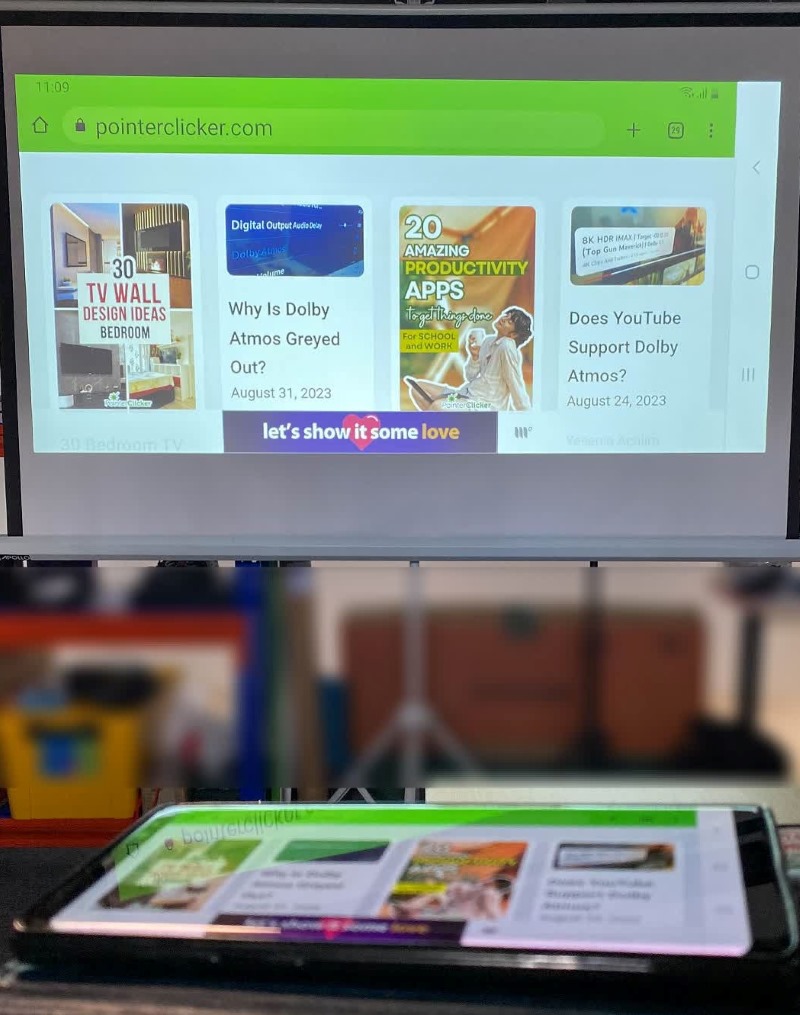How to Connect Your Phone to Any Projector via USB, Lightning
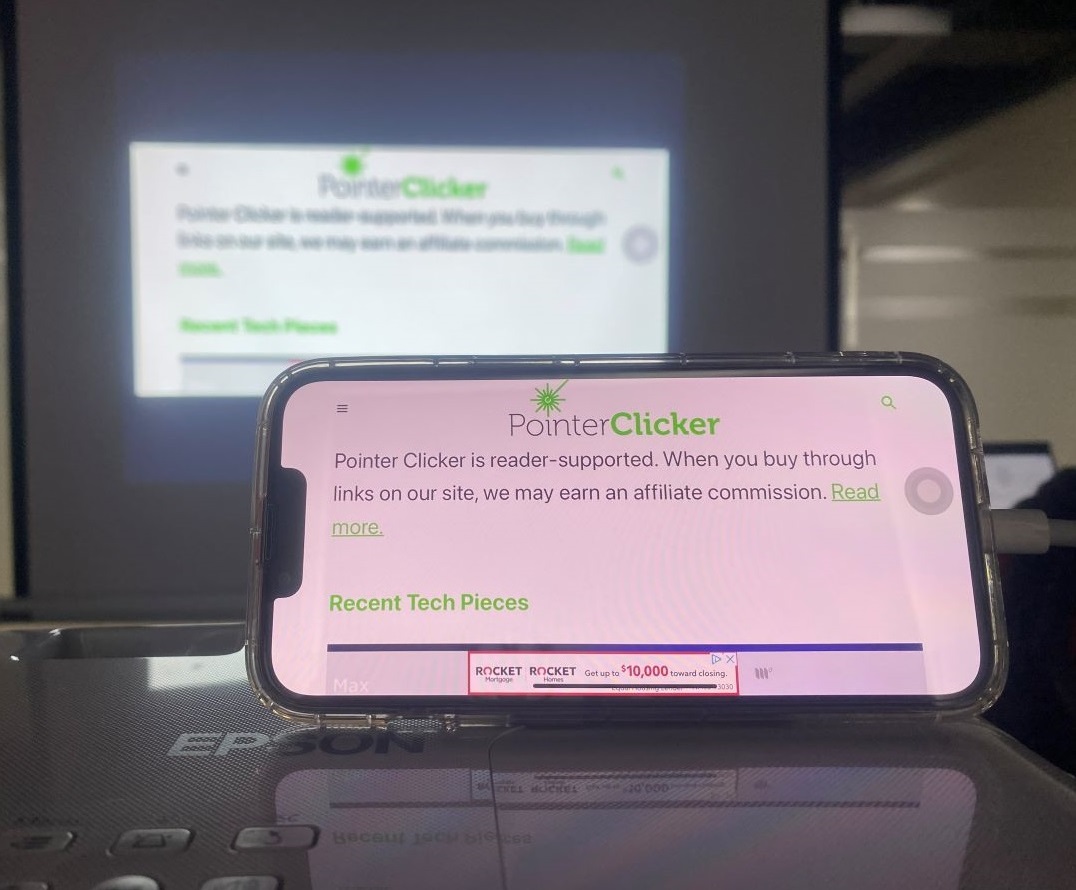
What To Know
- Phones can be connected to a projector using specific adapters or cables compatible with the phone’s port type, such as Lightning for iPhones, USB-C, or Micro USB for Android phones.
- Directly connecting a phone to a projector using a phone’s charging cable is not possible because projector USB ports typically do not support audio or video signals
This guide will demonstrate the seamless connection of your phone to a projector, be it via an iPhone’s Lightning port or the USB-C or Micro USB options on Android devices – consider all your bases covered.
Keep reading to see how!
Quick Navigation
Quick Guide
|
Phone’s Port |
Cable |
How to Connect |
| 1. Lightning |
|
iPhone → Lightning Digital AV Adapter → HDMI Cable → Projector |
| 2. USB-C |
|
|
| 3. Micro USB | Micro USB to HDMI Cable | Micro USB Phone → Micro USB to HDMI Cable → Projector |
1. Lightning iPhones
Materials Needed
- iPhone 5 or Above
- Lightning Digital AV Adapter
- HDMI Cable
- HDMI-Compatible Projector
Instructions
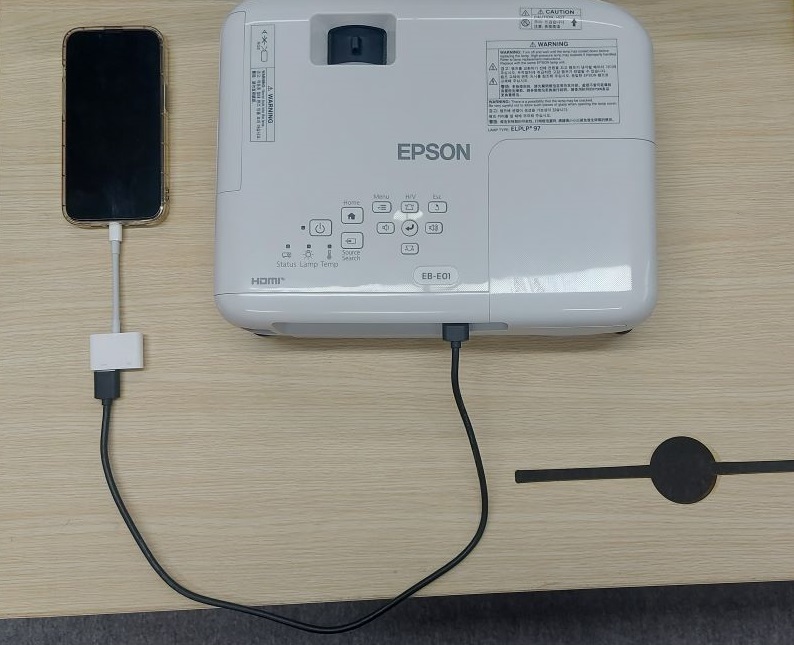
Step 1: Connect the Lightning Adapter to Your iPhone
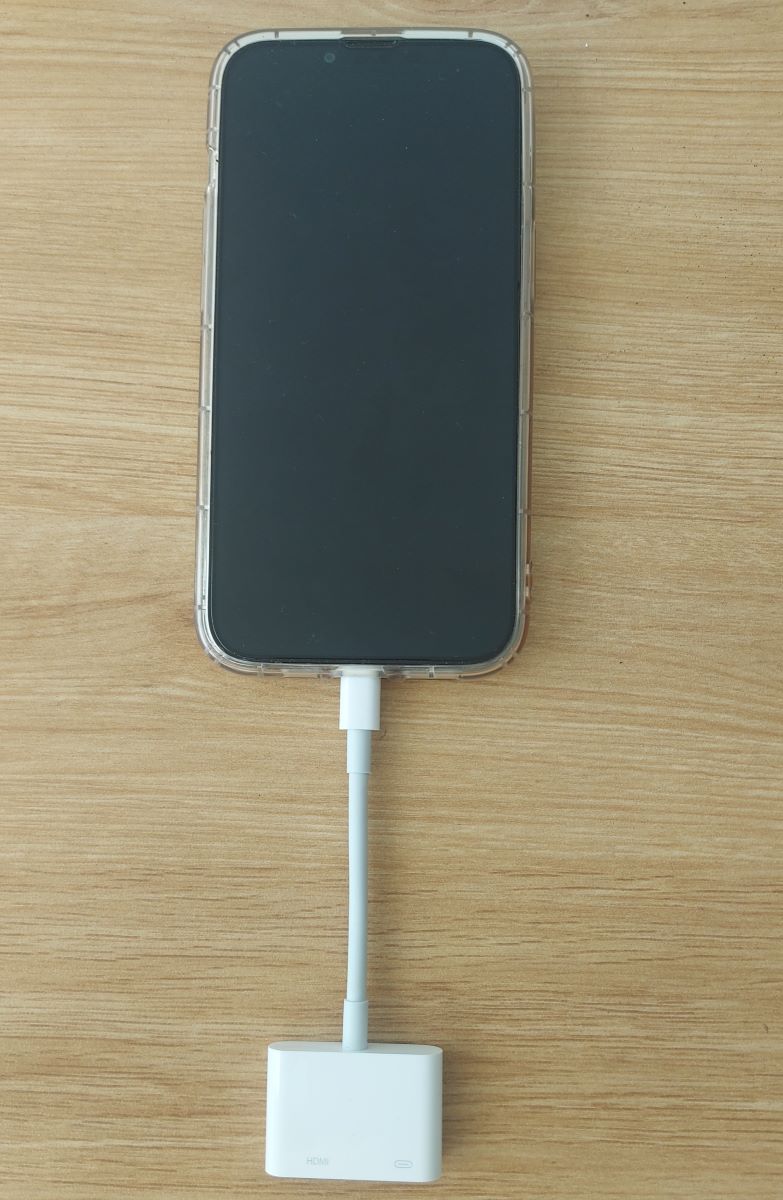
Plug the Lightning Digital AV Adapter into your iPhone’s Lightning port. Make sure it’s secure.
The adapter linked above features a charging port, so you can charge your iPhone while using it.
Step 2: Connect the Adapter to Your HDMI-Compatible Projector
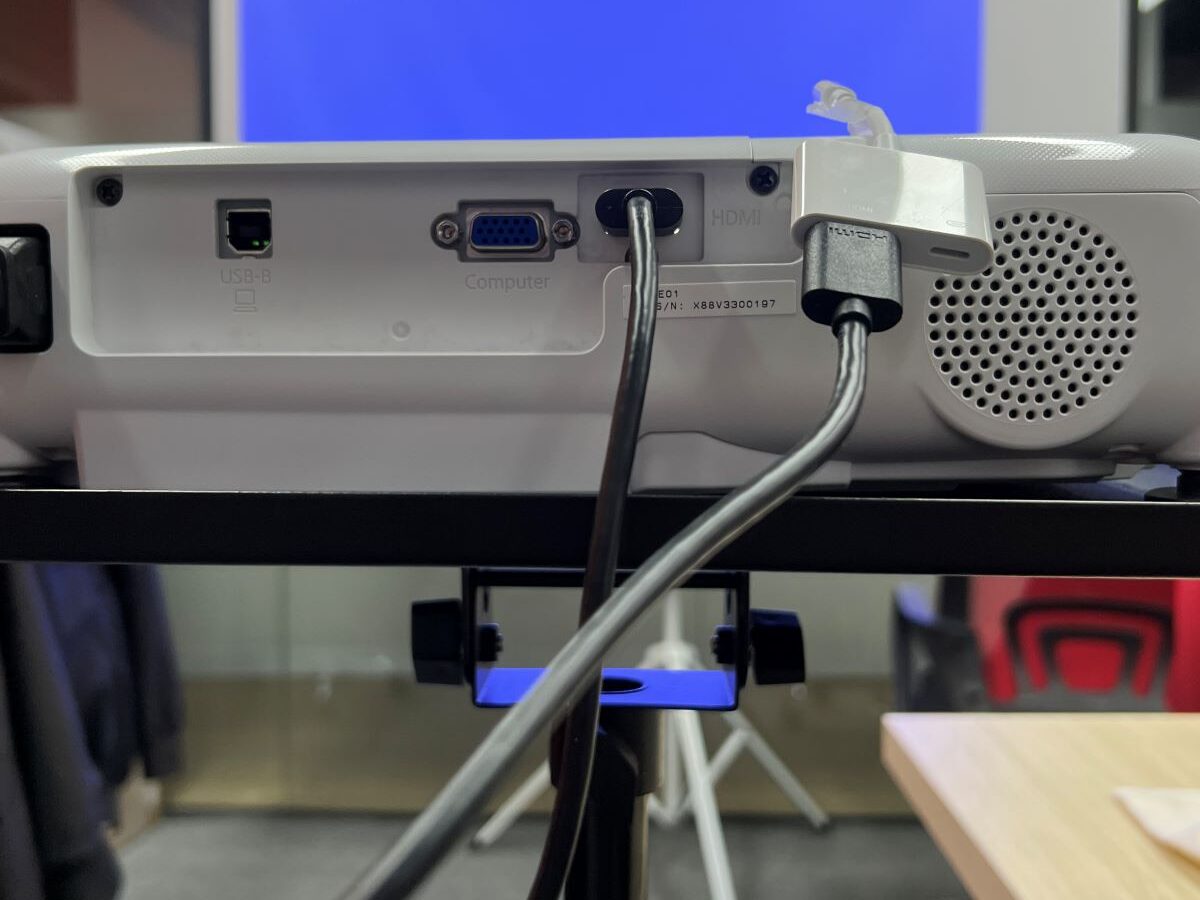
Plug one end of an HDMI cable into the Lightning Adapter’s HDMI port. Then, plug the other end of the cable into one of your projector’s available HDMI ports.
Check that both ends of the cable are securely fastened in place.
Step 3: Adjust the Projector’s Input
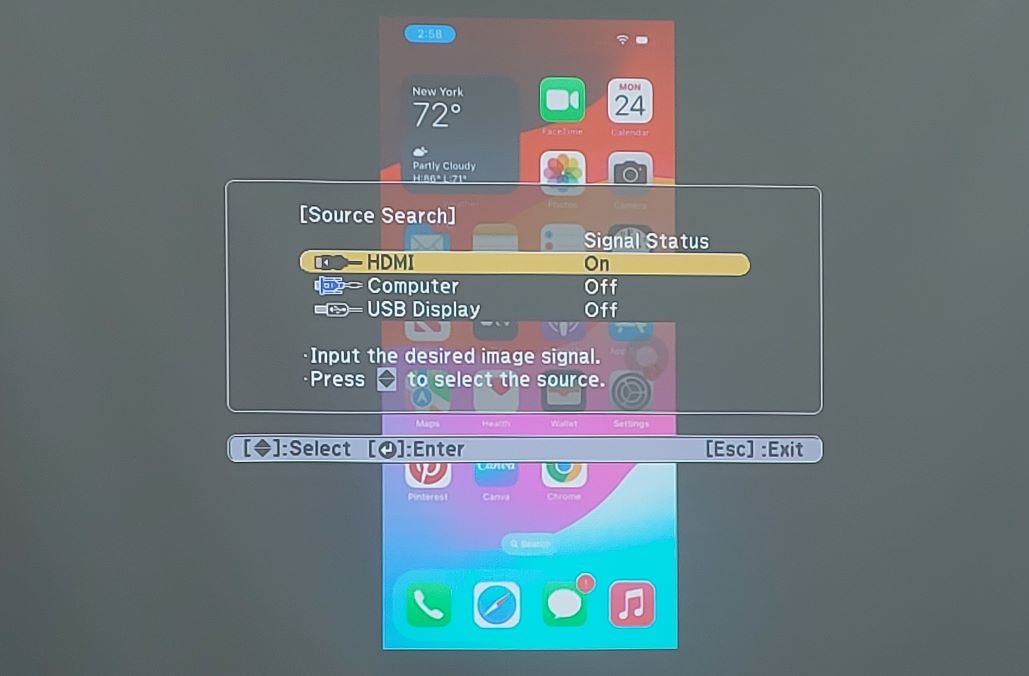
While some projectors will adjust their input automatically, you will have to adjust others manually. Adjust your projector’s input by pressing the Input/Source button found on its remote or control panel.
You’ll know you’ve found the right input when your projector displays your iPhone’s screen.
Watch the video below demonstrating how to connect your iPhone to a projector using a Lightning cable.
2. USB-C Phones
You will only be able to connect your USB-C-compatible Android phone to a projector if it supports DisplayPort Alternate mode.
While the cable is DisplayPort, it will still support HDMI cables and inputs, allowing you to connect to your projector’s HDMI port.
Although there isn’t a way to tell if your Android phone supports this feature by looking at it, you can see all compatible devices listed on DisplayPort – Mobile Archives.
There are two ways you can connect your USB-C-compatible Android phone to a projector: using a USB-C to HDMI adapter or a USB-C to HDMI cable.
Let’s learn how to do both!
Method 1: USB-C to HDMI Adapter
Materials Needed
- USB-C-Compatible Android Phone
- USB-C to HDMI Adapter
- HDMI Cable
- HDMI-Compatible Projector
Instructions
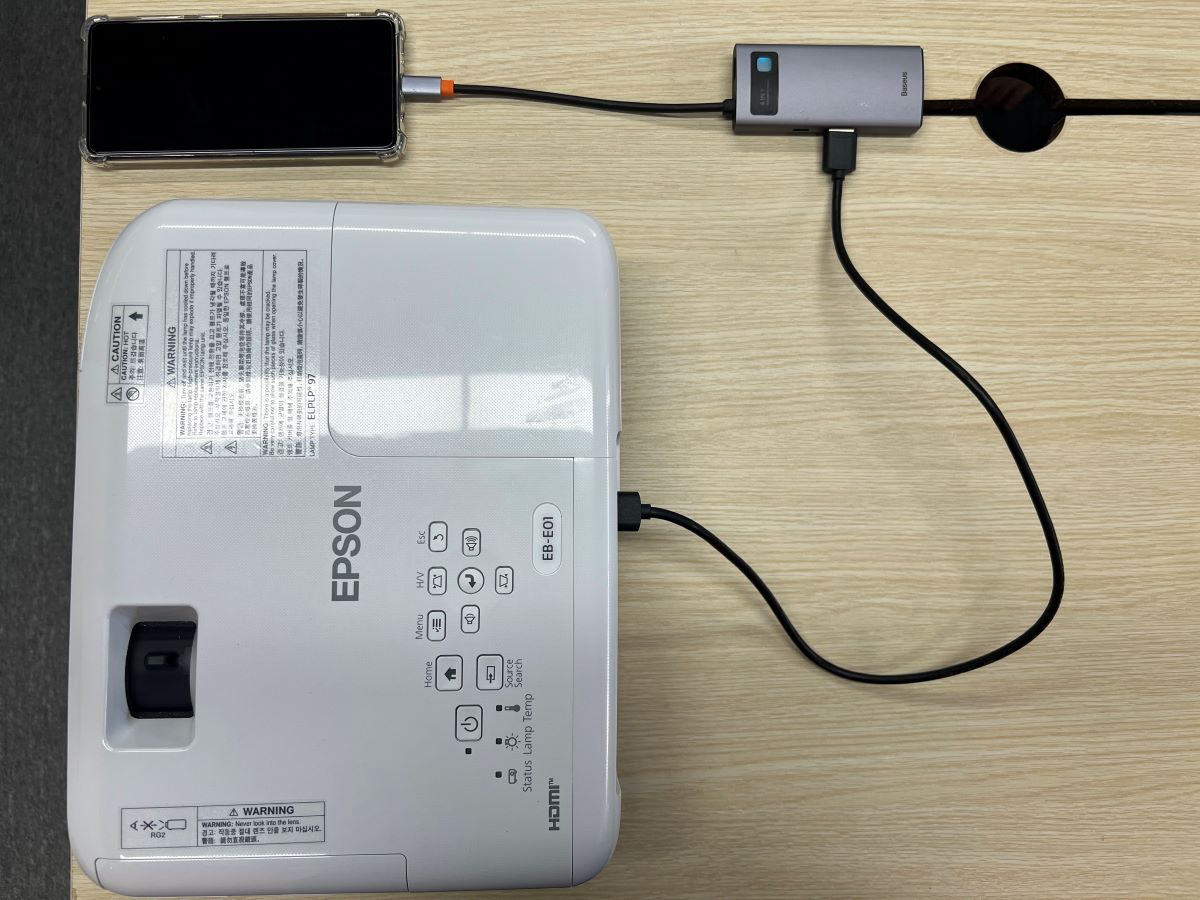
Step 1: Connect the USB-C to HDMI Adapter to Your Phone
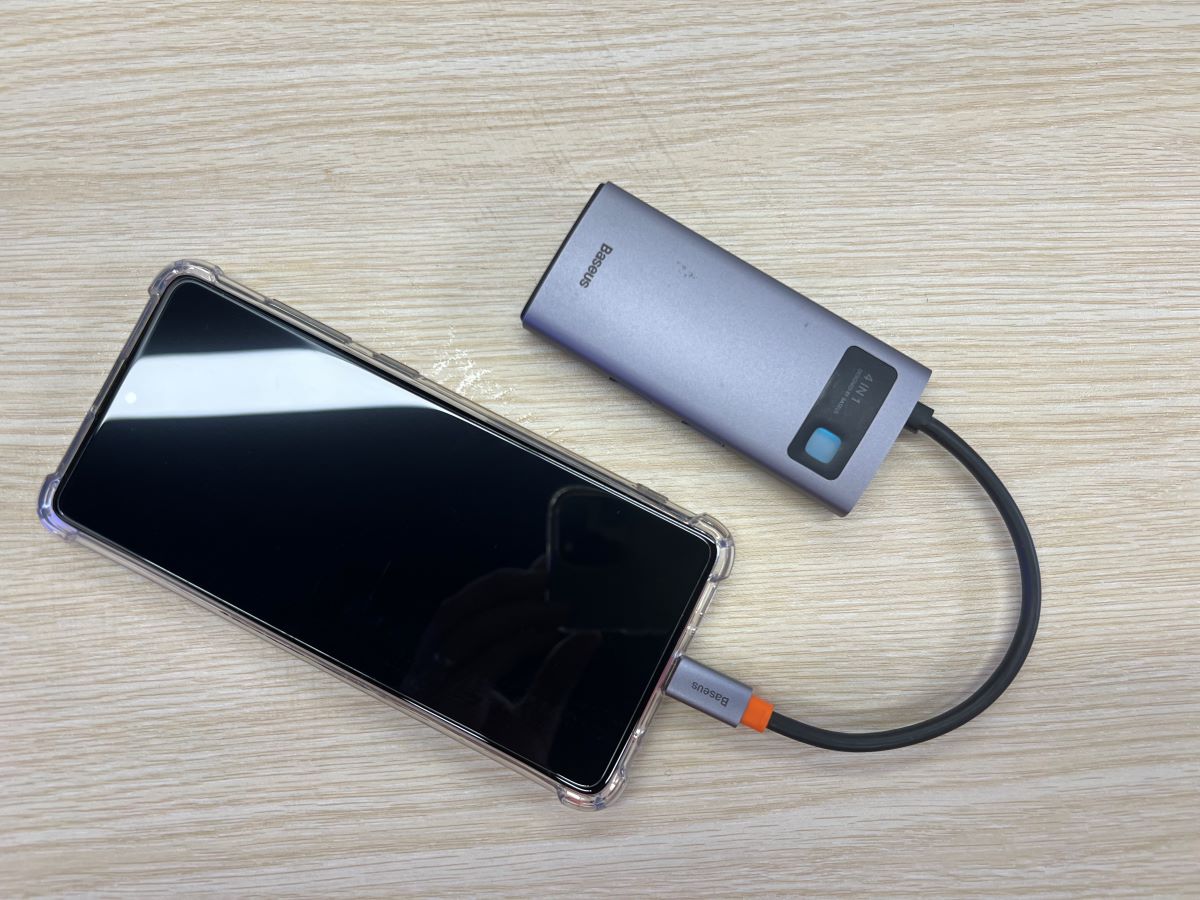
Plug the USB-C to HDMI adapter into your Android phone’s USB-C port. Unfortunately, few USB-C adapters feature charging ports, so make sure your phone is charged before connecting it to your projector.
Step 2: Connect the USB-C to HDMI Adapter to Your HDMI-Compatible Projector
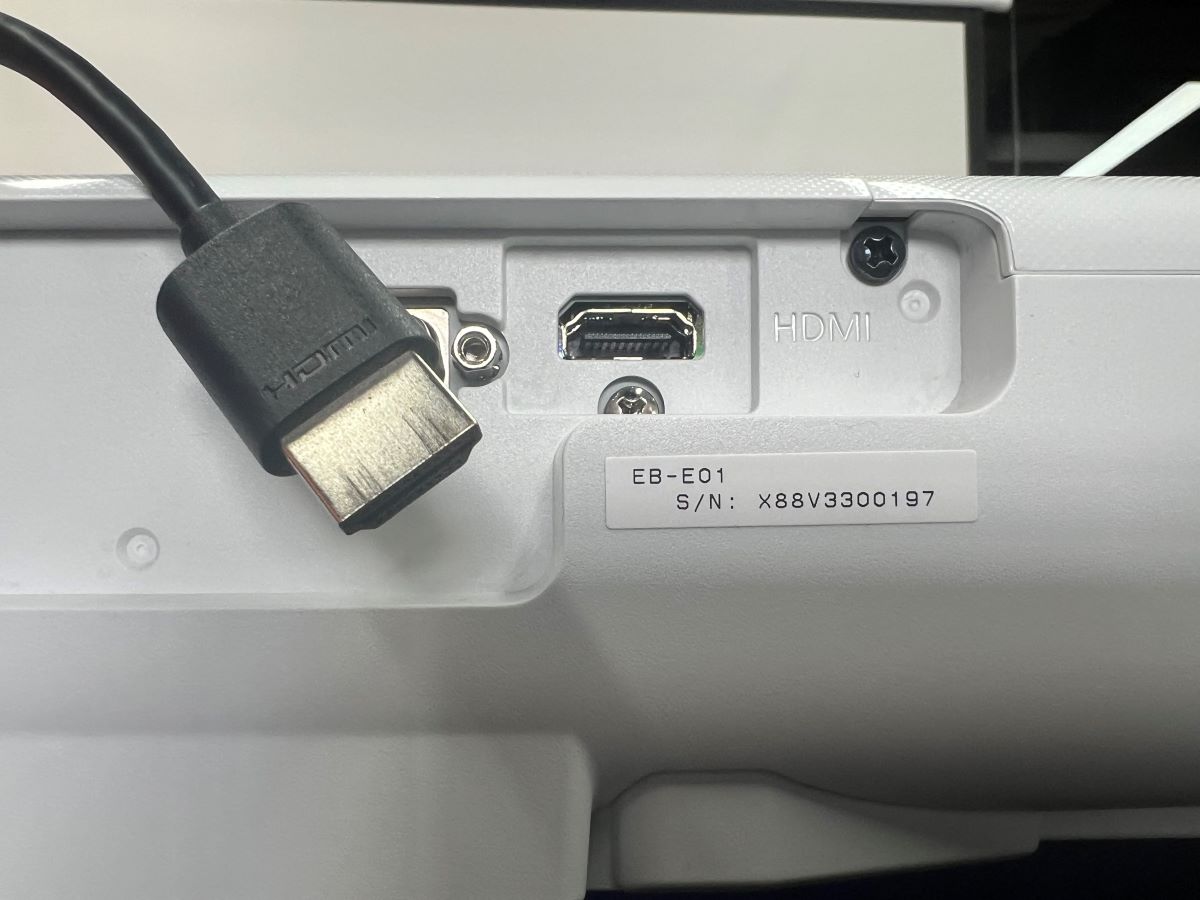
Connect one side of an HDMI cable to the adapter’s HDMI port. Then, connect the HDMI cable’s other end to your projector.
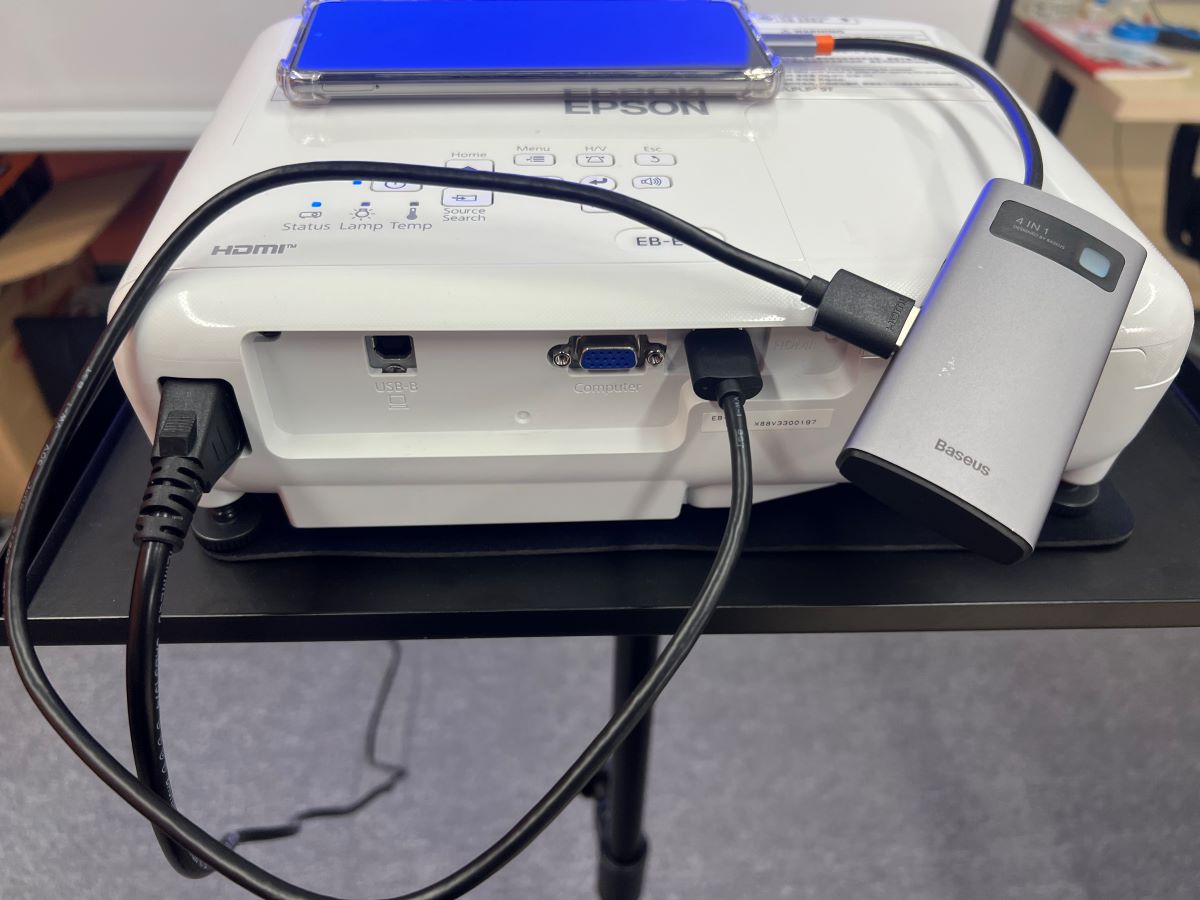
Step 3: Change Your Projector’s Input
Finally, change your projector’s input so it displays your Android phone’s screen. If you’re not sure which input to select, check which HDMI port (e.g. HDMI 1, 2, etc.) the phone is plugged into.
Watch the video below demonstrating how to connect an Android phone to a projector using a USB-C to HDMI adapter.
Method 2: USB-C to HDMI Cable
Materials Needed
- USB-C-Compatible Android Phone
- USB-C to HDMI Cable
- HDMI-Compatible Projector
Instructions
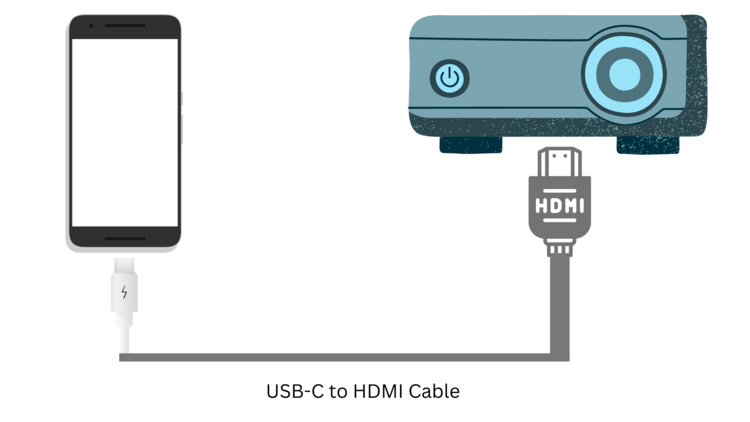
Step 1: Connect the USB-C to HDMI Cable to Your Android Phone
Plug the USB-C to HDMI cable’s USB-C side into your Android phone.
Bear in mind that since this cable will occupy your phone’s charging port, you will not be able to charge it when in use.
Step 2: Connect the USB-C to HDMI Cable to Your HDMI-Compatible Projector
Now, plug the HDMI end of the same USB-C to HDMI cable into your projector’s HDMI port.
Tip: Take note of which HDMI port you’re plugging the HDMI cable into.
Step 3: Adjust Your Projector’s Input
If your projector hasn’t already done so automatically, change its input to match the HDMI port you’ve plugged the USB-C to HDMI cable into.
Watch the video below demonstrating how to connect an Android phone to a projector using a USB-C to HDMI cable.
3. Micro USB Phones
Please note that only Micro USB-compatible phones that support MHL can be connected to your projector’s HDMI port.
You can find out whether your phone is MHL-compatible or not by searching for it on the official MHL website.
To use this solution, you will need to download a third-party app onto your phone, so make sure it’s connected to the internet.
Materials Needed
- Micro USB-Compatible Phone
- Micro USB to HDMI Cable
- HDMI-Compatible Projector
Instructions
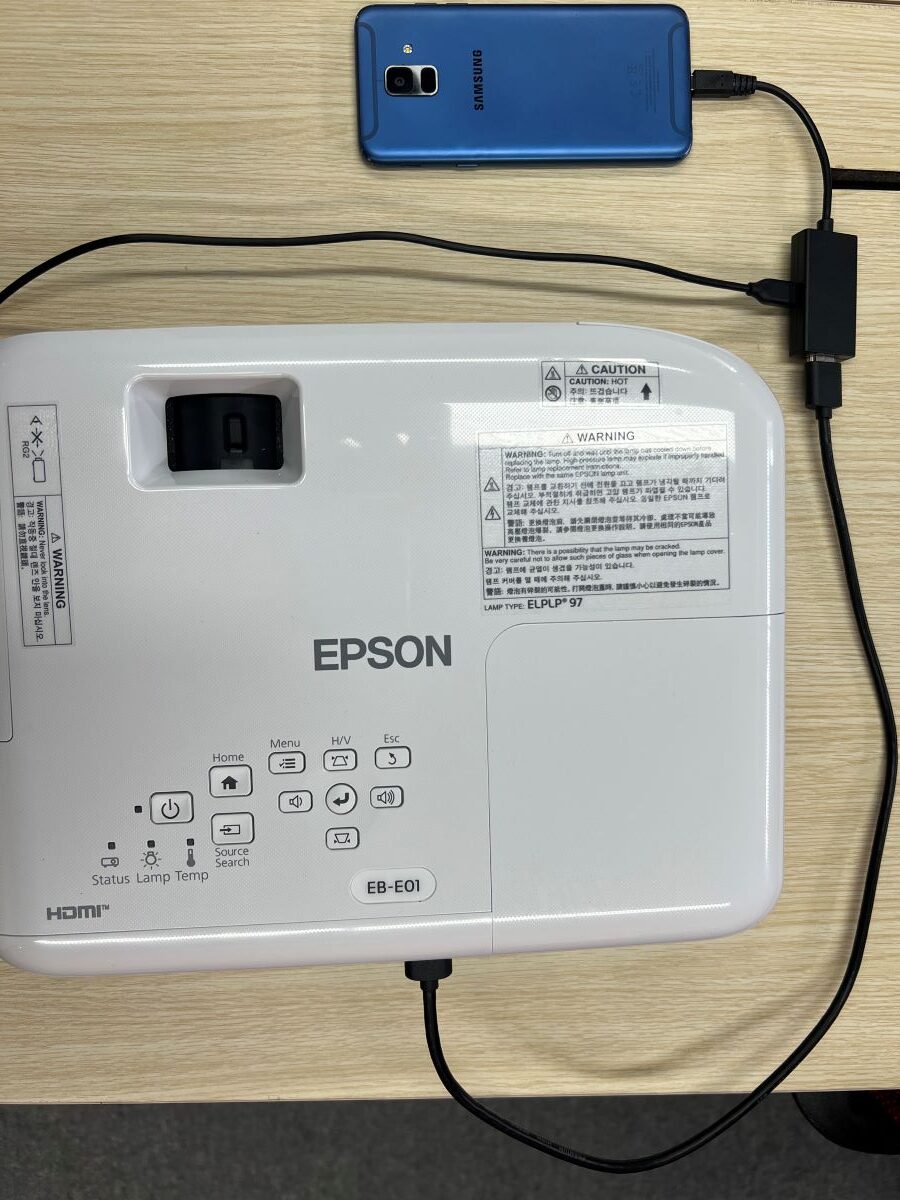
Step 1: Install the MiraPlug App
Download the MiraPlug app onto your Android Phone from the Google Play Store.
Step 2: Connect the Micro USB to HDMI Cable to Your Phone

Plug the Micro USB to HDMI cable’s Micro USB connector into your phone’s charging port. The linked cable has an attached USB-C connector that you must remove to reveal the Micro USB connector.
Step 3: Connect the Micro USB to HDMI Cable to Your HDMI-Compatible Projector
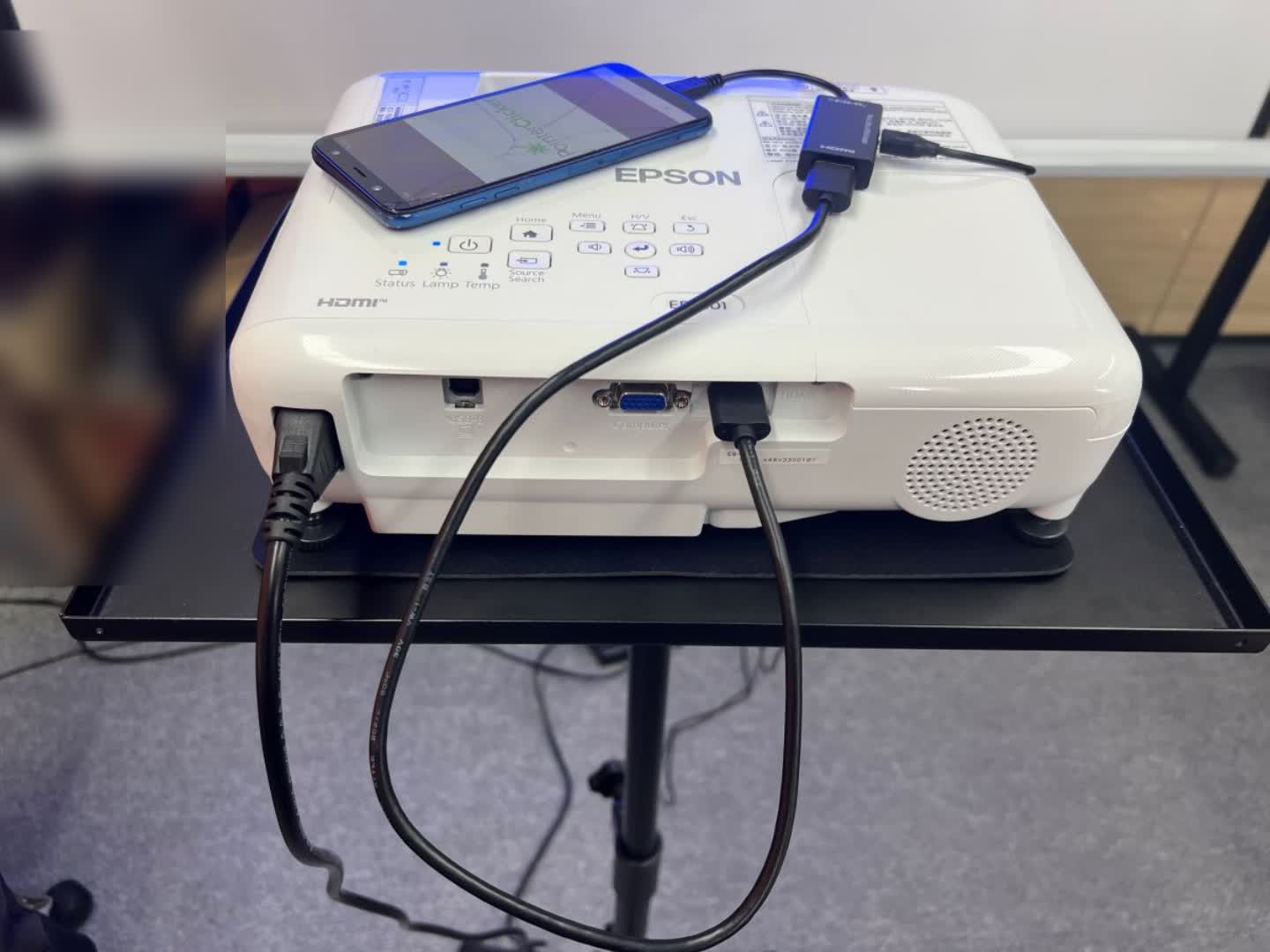
Then, plug the free end of your adapter (HDMI) into your projector.
Step 4: Plug the Cable Into Power
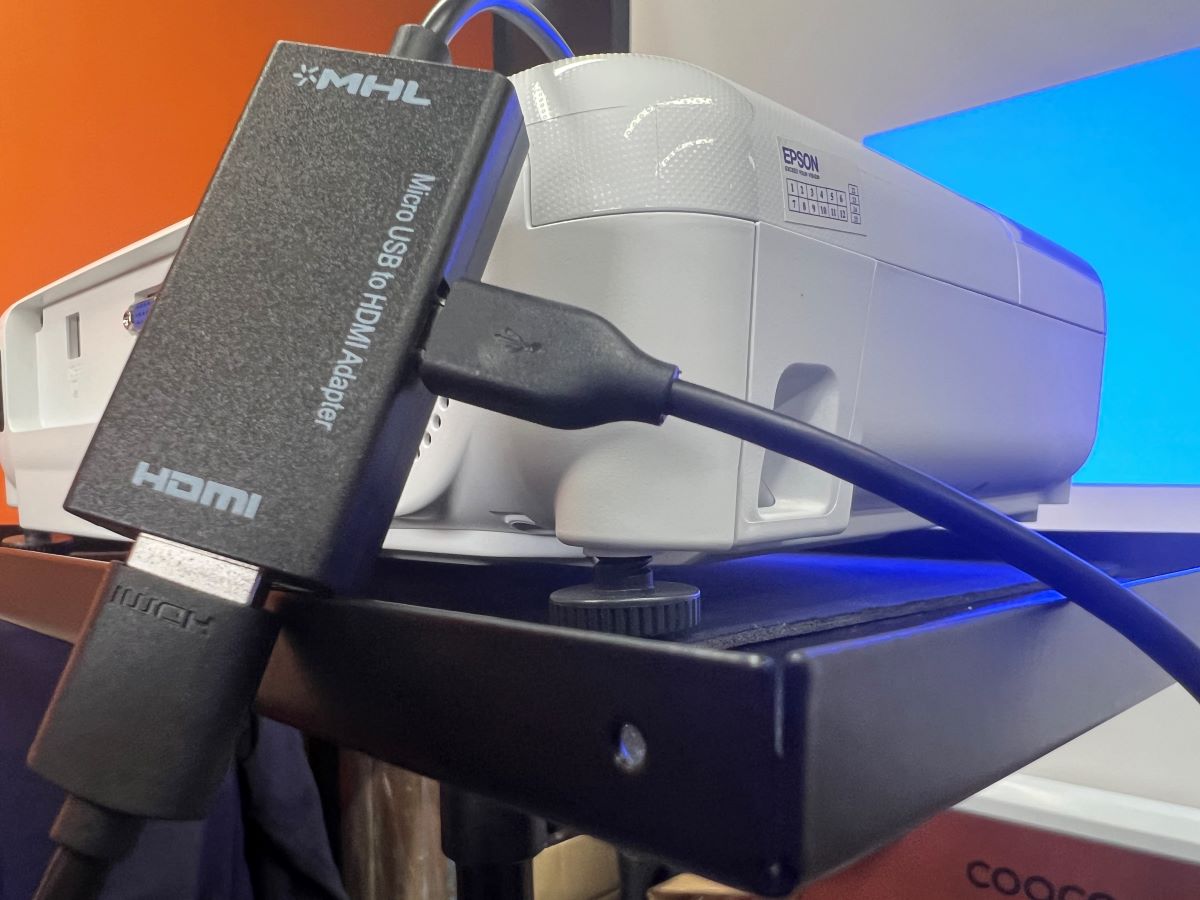
This cable must be powered. So, plug the attached USB-A cable into the nearest wall outlet using a USB power adapter.
Step 5: Change Your Projector’s Input
Adjust your projector’s input to HDMI.
Step 6: Finish the Setup Process on Your Phone
Now, turn your attention to your phone. When asked if you want to Use by default for this USB accessory, select OK on-screen.
Then, when prompted, click Start Now to begin mirroring your phone’s screen on your projector.
Watch the video below demonstrating how to connect a Micro USB-compatible phone to a projector using a Micro USB to HDMI cable and the MiraPlug app.
Yesenia Achlim is a technical copywriter and editor with a focus on AV equipment. She aims to break down complicated topics and make technology accessible, no matter your technical expertise. When she’s not teaching you how to replace a projector lamp, you can find her reading and baking.

